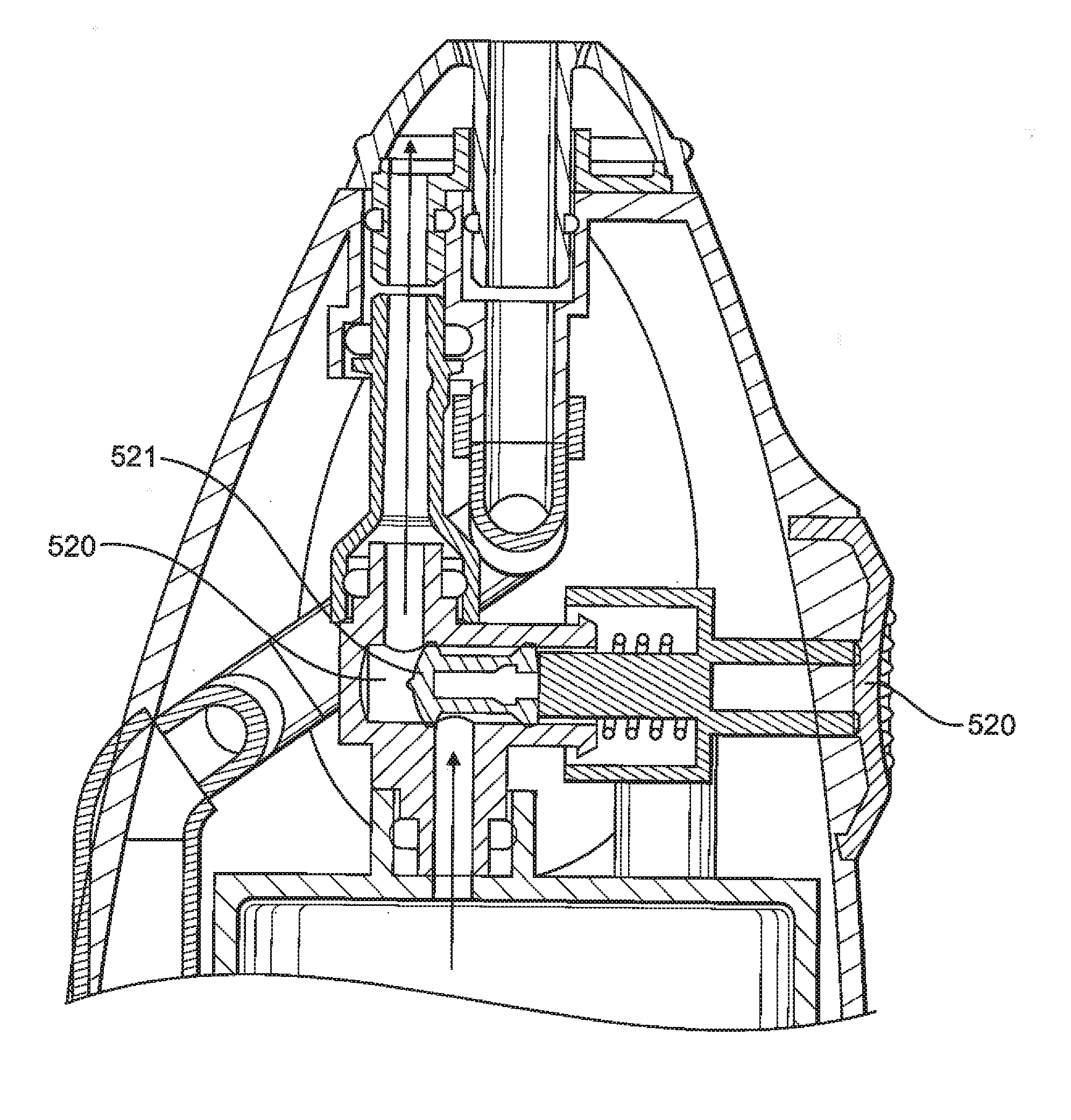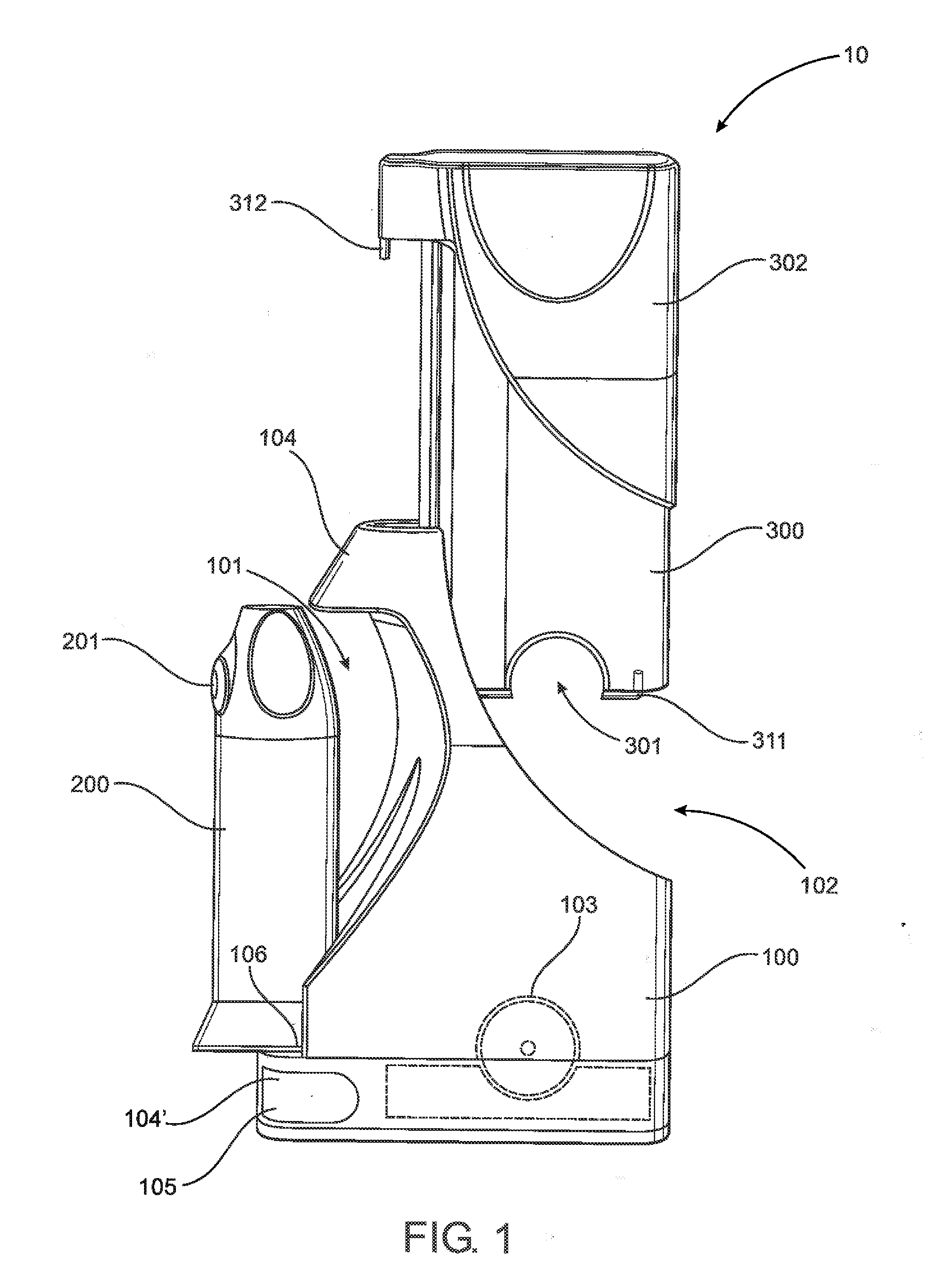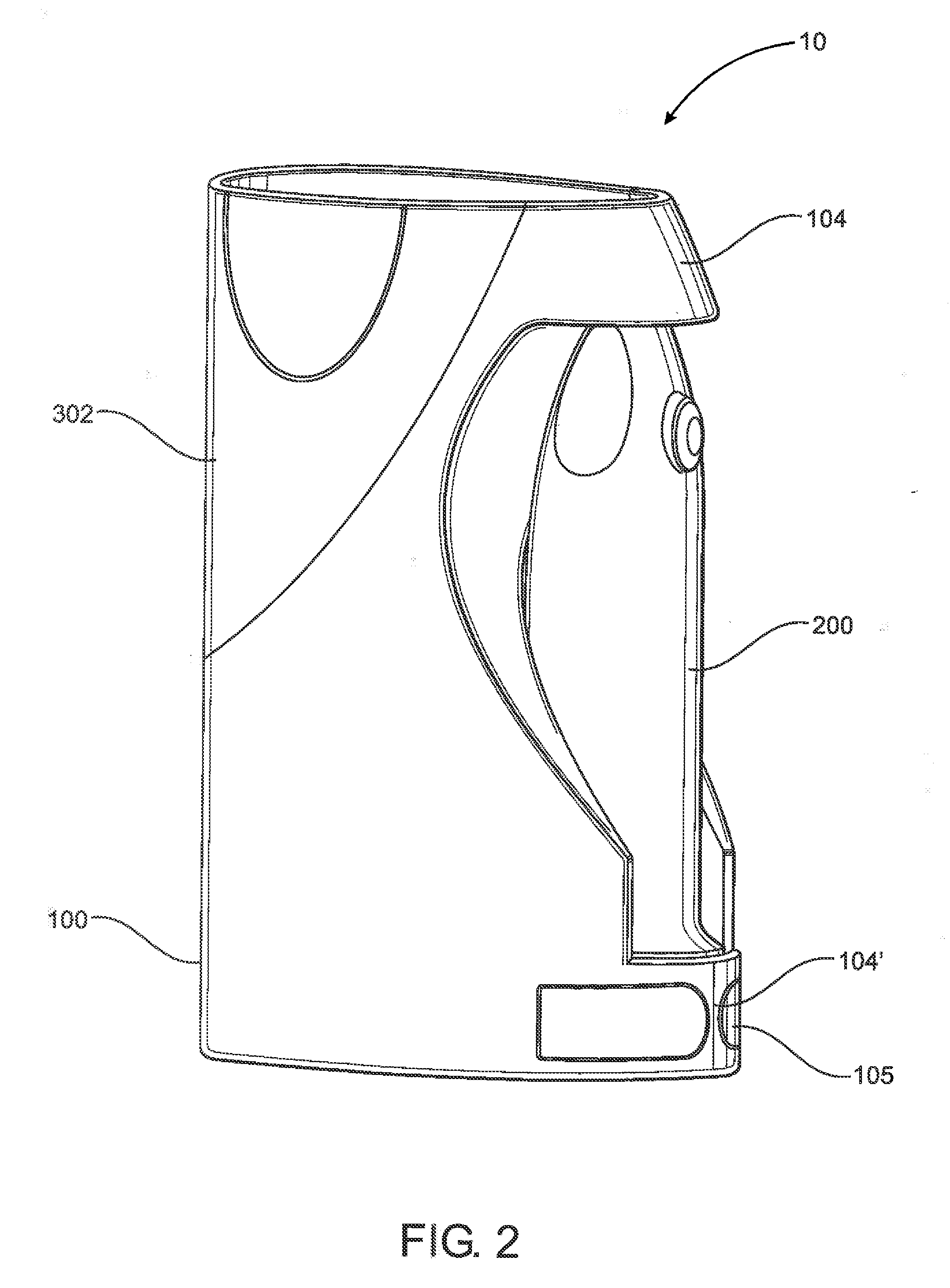Nasal irrigation assembly and system
a technology of assembly and nasal irrigation, applied in the field of nasal irrigation assembly and system, can solve the problems of poor nasal hygiene, nasal and sinus disease, and the inherently high potential side effects of medications used to treat nasal pathology, and achieve the effect of effectively cleaning, disinfecting and/or medicating, and promoting and maintaining nasal hygien
- Summary
- Abstract
- Description
- Claims
- Application Information
AI Technical Summary
Benefits of technology
Problems solved by technology
Method used
Image
Examples
Embodiment Construction
[0041]As clearly represented in the accompanying drawings, the present invention is directed to an irrigation system generally indicated as 10 for the irrigation of a user's nasal cavity and passages in order to promote and maintain better nasal hygiene. The irrigation system 10 may comprise a docking station 100, an irrigation assembly or handheld irrigator 200, and a solution assembly 300.
[0042]More specifically, the docking station 100 may comprise a first recess 101 structured to removably receive the handheld irrigator 200, as well as a second recess 102 structured to removably receive the solution assembly 300. As such, the docking station 100 is operatively structured to allow for the refilling of irrigating fluid from the solution assembly 300 to the handheld irrigator 200. In at least one embodiment, the docking station may comprise a delivery assembly 103 to effect the refilling of irrigating fluid, or to otherwise force irrigating fluid from the solution assembly 300 into...
PUM
 Login to View More
Login to View More Abstract
Description
Claims
Application Information
 Login to View More
Login to View More - R&D
- Intellectual Property
- Life Sciences
- Materials
- Tech Scout
- Unparalleled Data Quality
- Higher Quality Content
- 60% Fewer Hallucinations
Browse by: Latest US Patents, China's latest patents, Technical Efficacy Thesaurus, Application Domain, Technology Topic, Popular Technical Reports.
© 2025 PatSnap. All rights reserved.Legal|Privacy policy|Modern Slavery Act Transparency Statement|Sitemap|About US| Contact US: help@patsnap.com



